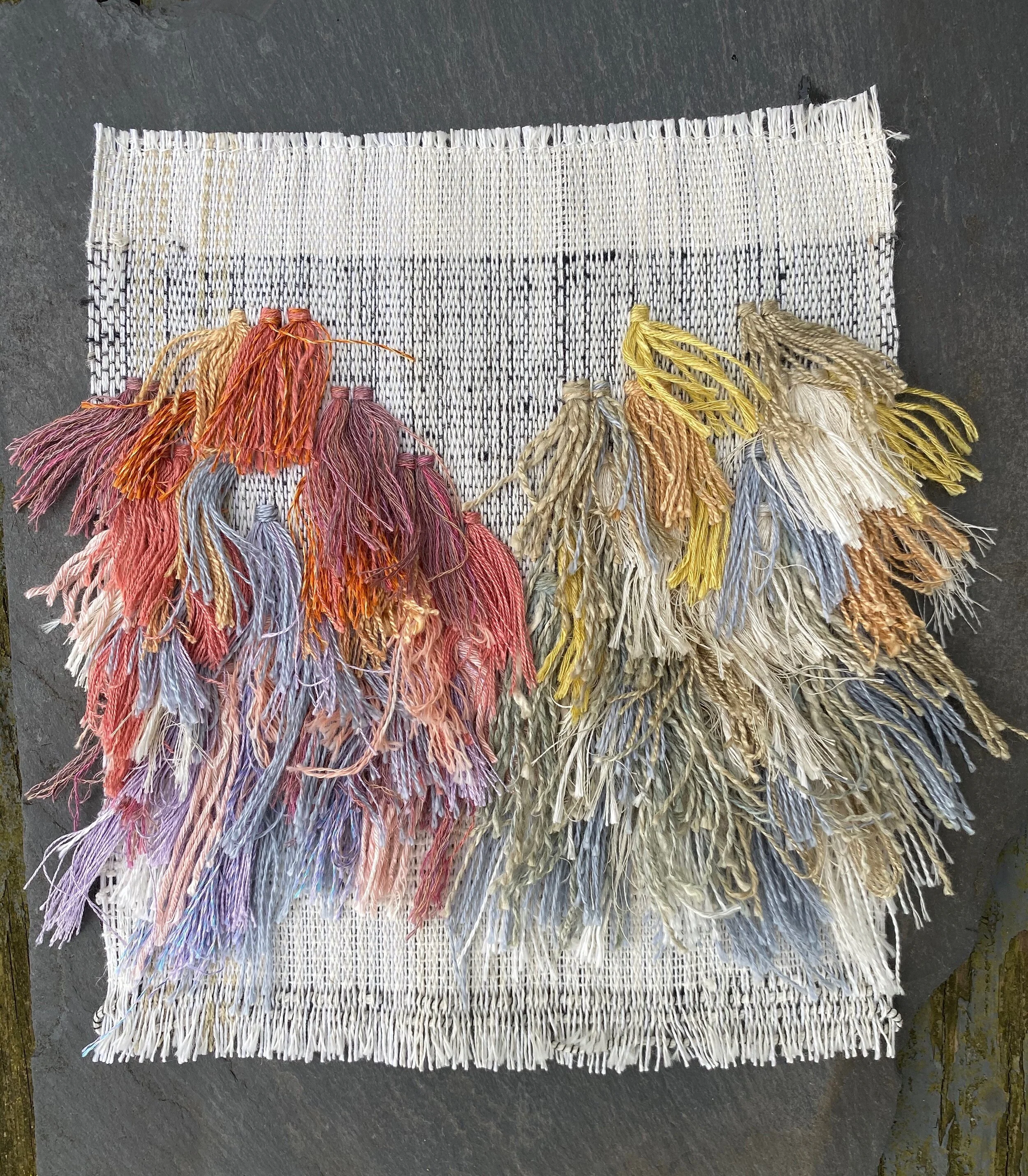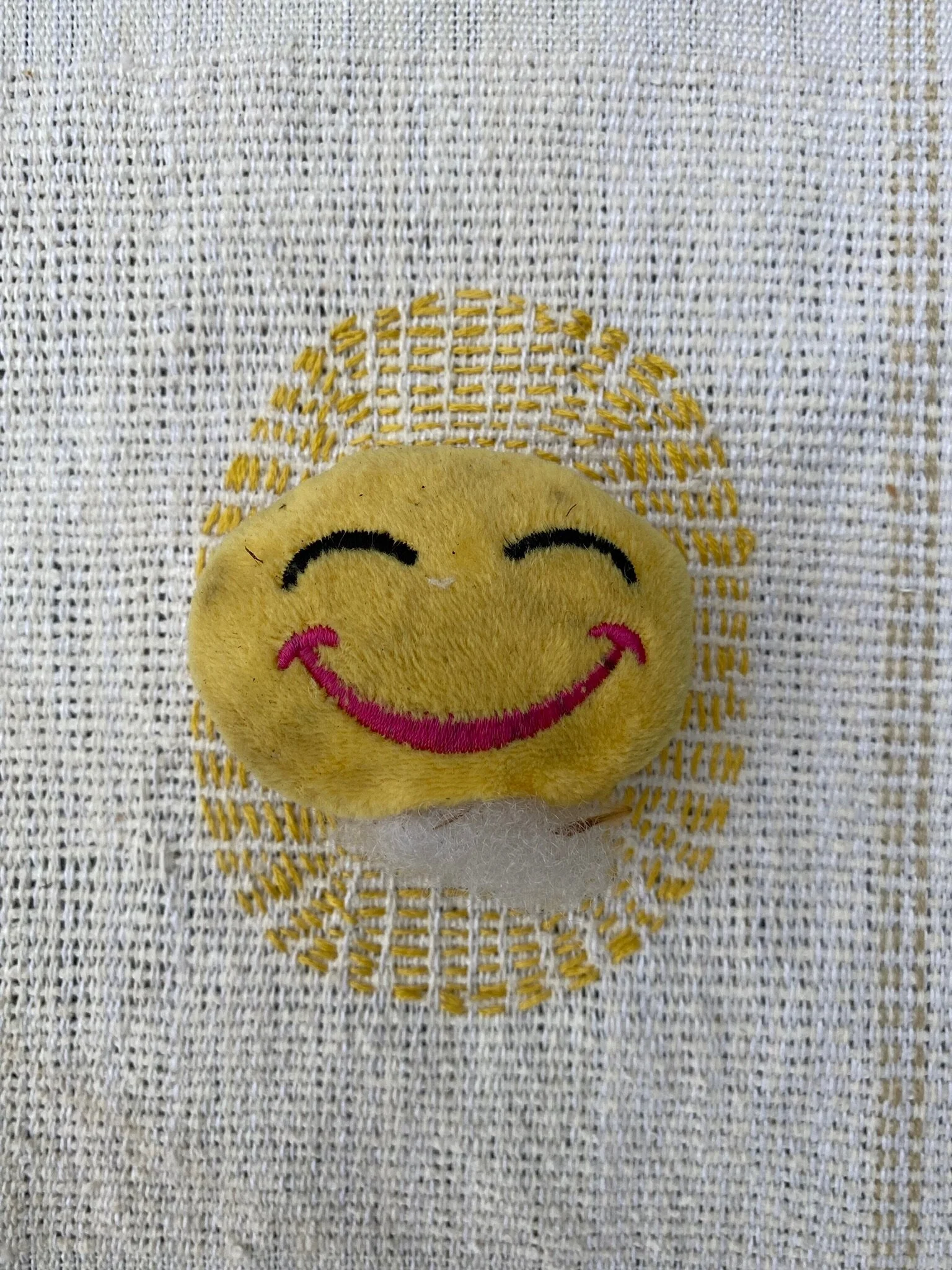Found Objects & Prayer Flags
Prayer flags have always appealed to me for so many reasons; they are a textile and I love textiles but it is more than that. Flags act as messengers for us, the ‘us’ being me or you or your friend who lives a thousand miles away, carrying and sharing our thoughts to those we are thinking about. They are the vessel of compassion or empathy or forgiveness. In my imagination, I see these desires enter the flag, sit for a bit, and then the air takes them to the recipient. It’s as simple and powerful as that. I weave these flags from natural materials; cotton, silk or linen. All materials with absorbency to carry the messages without loss. As part of my research on the inequities of social capital in the towns in Mercer County, NJ, I found myself walking the neighborhoods of the different elementary schools in the largest of the towns in the county, Trenton, the county seat and the capital of New Jersey. Walking let me feel the neighborhood, the quiet or the noise, the movement on the streets or the emptiness and as I walked I began to notice different sorts of objects on the ground. Some areas had piles of empty bottles, mostly those airline bottles, nestled against the chain-link fence enclosing the school and crowding the leaves and other debris. It was the other debris that made me stop to examine and think about found objects, ones that had an active life before it was sent to rest among leaves and airline bottles.
It is especially poignant when the found objects come from schools, elementary schools, where young ones run toward the doors excited to be with their friends and teachers and re-emerge at 3pm eager for their families. I walk the perimeters of the schools searching for discarded objects that tell a story of the occupants. What has been used and left behind, accidentally or not? A hair piece in a corner of what I picture as the recess yard, one neon green glove crumpled under the leaves, lonely without a hand and a partner. I am at Jefferson School in Trenton, New Jersey and find this small smiley face, stuffed with polyester fiber but still quite content. I place it in the frame embroidered on the prayer flag, thinking that she is most comfortable and happy within the frame looking out at us.
At Luis Munoz-Rivera Middle School, I find fragments of webbing for a lawn chair. They are scattered along the edge of the sidewalk opposite the school. I imagined the chair, intact seat, used by a grandparent who lived nearby and sat each morning and afternoon to greet their grandchild entering and leaving school. I weave it into the prayer flag for it to carry the memories of healthier times back to the grandparent.
Woodrow Wilson School is adjacent to an active industrial site and I walk between the two and find a tiny toy boot, a large flower hair clip, a torn math worksheet not yet filled in and more broken pencils. There is a small red glove lying under the swings and plastic heart with a kitty engraved on it. Objects once holding a child’s hair away from their face or warming small hands or looked at in frustration as many of us do to math worksheets. These pieces had intentions of being worn, written on or played with and their final home need not be against the fence of an industrial site or waiting underneath a swing for the owner to reclaim it. I take these pieces and place them in the waiting, blank flag and give them back their intentions so the wind can take them.



